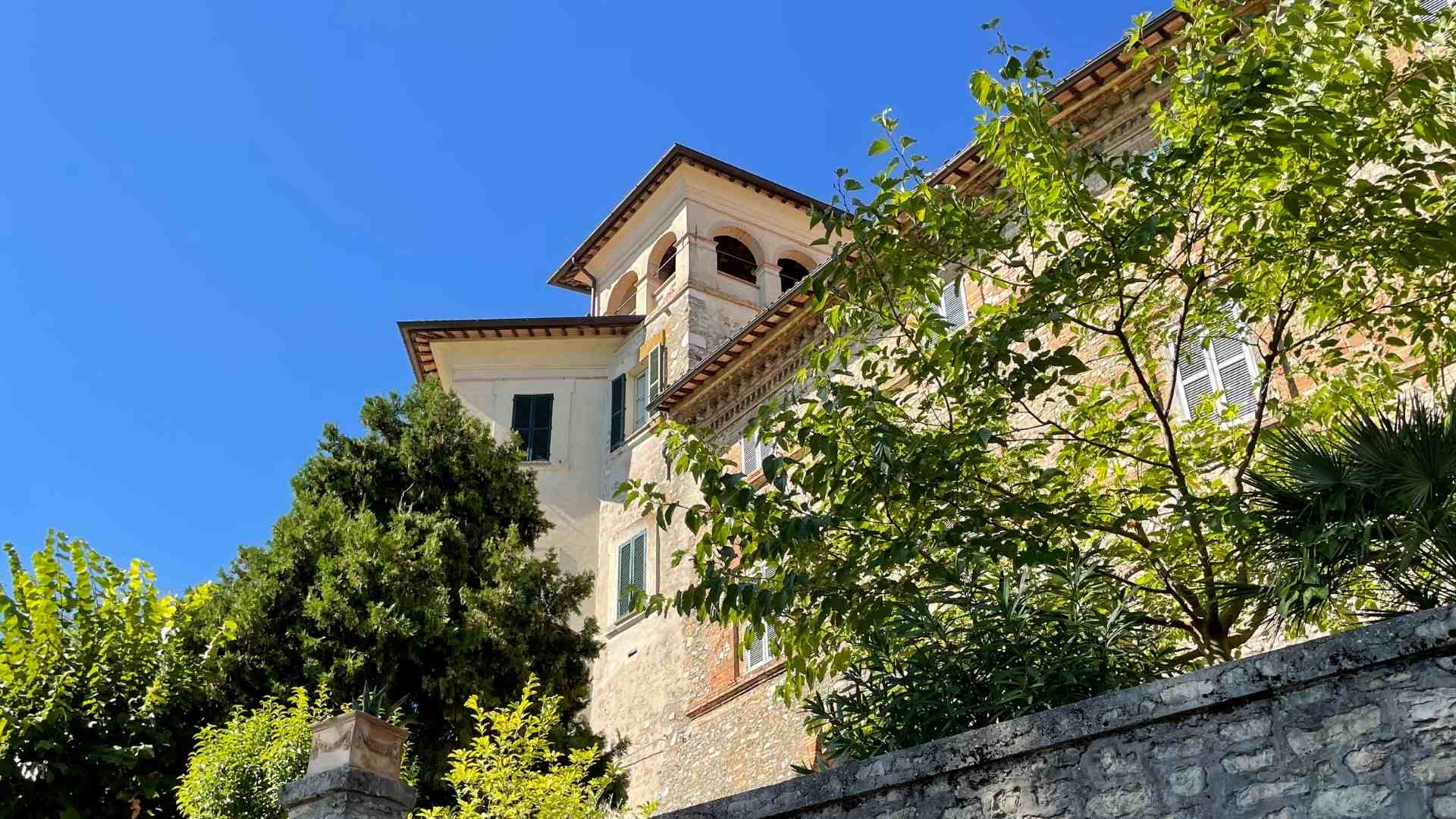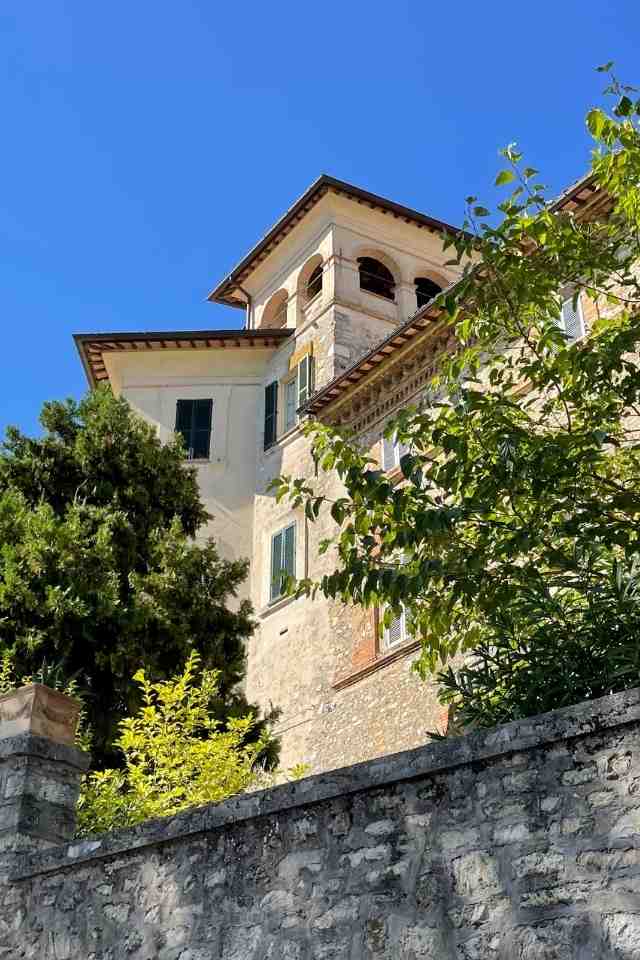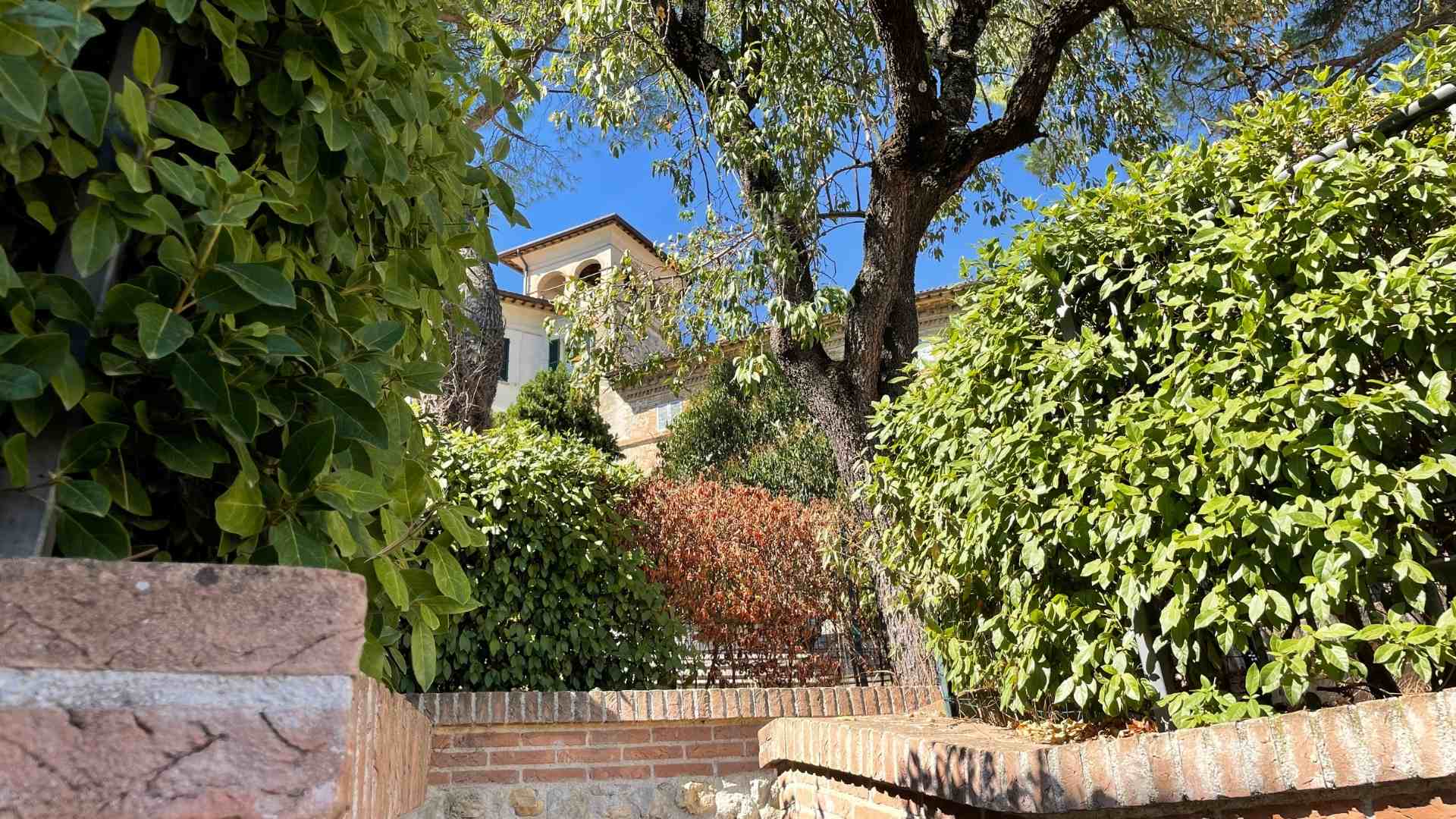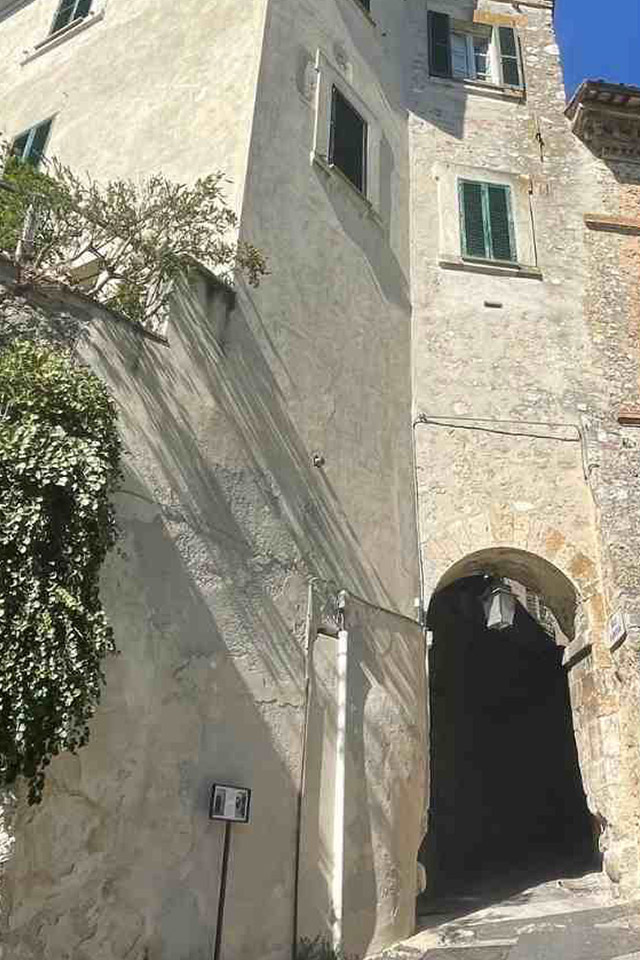
punto di interesse
point of interest


The beautiful palace which faced on the San Francesco square, heart of the city life, is named to one of the most important exponents sculptors of the story of Italy who in San Gemini had different possessions: Antonio Canova.
It was 1530 when Pope Clement VII gave San Gemini, elevated to a duchy some years later, to the Orsini family.
We know that in 1645, under the pontificate of Innocenzo X, Ferdinando Orsini still was duch of San Gemini and the find of a “pianella” in which was carved the date 1645, confirm the rebuilt in those years of the ancient part of the palace, which faces on the San Francesco square by Antonio da Sangallo il Giovane: the new edification of the structure was end in 1695 under Giovanni Antonio Orsini.
Antonio Canova in his frequent trips – had the assignment from Pio VII of Inspector of Belle Arti and was him to recover different confiscated property by Napoleon – visited Umbria at different times between the end of ‘700 and the beginning of ‘800.
In San Gemini he met the canons of the Duomo of Santo Gemine, who asked the artist for a drawing and the financial for the rebuilding of the church of the Patron.
Seems that the artist, fascinated by the city, in addition to afford the costs of the renovation, purchased between the 1813 and the 1816 the palace and other possessions in Vall’Antica location by Bartolomeo Terzi and he turned it into a residence of vacation.
After that the building was ceded to the Cistercian monks and from those, at the beginning of the century, to the Medici family, actual owner. The french occupation before, and the deutch occupation after, we were deprived of those treasures that the palace contained.

The beautiful palace which faced on the San Francesco square, heart of the city life, is named to one of the most important exponents sculptors of the story of Italy who in San Gemini had different possessions: Antonio Canova.
It was 1530 when Pope Clement VII gave San Gemini, elevated to a duchy some years later, to the Orsini family.
We know that in 1645, under the pontificate of Innocenzo X, Ferdinando Orsini still was duch of San Gemini and the find of a “pianella” in which was carved the date 1645, confirm the rebuilt in those years of the ancient part of the palace, which faces on the San Francesco square by Antonio da Sangallo il Giovane: the new edification of the structure was end in 1695 under Giovanni Antonio Orsini.
Antonio Canova in his frequent trips – had the assignment from Pio VII of Inspector of Belle Arti and was him to recover different confiscated property by Napoleon – visited Umbria at different times between the end of ‘700 and the beginning of ‘800.
In San Gemini he met the canons of the Duomo of Santo Gemine, who asked the artist for a drawing and the financial for the rebuilding of the church of the Patron.
Seems that the artist, fascinated by the city, in addition to afford the costs of the renovation, purchased between the 1813 and the 1816 the palace and other possessions in Vall’Antica location by Bartolomeo Terzi and he turned it into a residence of vacation.
After that the building was ceded to the Cistercian monks and from those, at the beginning of the century, to the Medici family, actual owner. The french occupation before, and the deutch occupation after, we were deprived of those treasures that the palace contained.

This palace, articulated and particular, takes its typical irregularity from the fact that it’s built from the union of ancient building units.
The XVII century building faces on the avenue named to the artist from Veneto and dominates the below San Francesco square. Incorporate in itself the door today called Canova and in the past Porta Sale.

This palace, articulated and particular, takes its typical irregularity from the fact that it’s built from the union of ancient building units.
The XVII century building faces on the avenue named to the artist from Veneto and dominates the below San Francesco square. Incorporate in itself the door today called Canova and in the past Porta Sale.

With the Porta Tuderte (or Porta di San Giovanni), Porta del Sale, is the most ancient door of San Gemini: represented the south entrance of the ancient Via consolare Flaminia which permit the passage inside on the city for then go out from the other in direction of Carsulae (link al PDI).
Its ancient foundation is also confirmed by the view of the deterioration of the lower parts of the pillars arch, caused for sure by the wagon hubs which transited there.
discover all the points of interest of the village
Information, appointments and travel proposals on:
The Progressive Web App is part of the project “Le Terre dei Borghi Verdi”, realized in collaboration and with the contribution of Regione Umbria – Assessorato al Turismo
©2021 Le Terre dei Borghi Verdi
Le Terre dei Borghi Verdi
Welcome in Southern Umbria,
where the slowness becomes value
Information, appointments and travel proposals on:
The Progressive Web App is part of the project “Le Terre dei Borghi Verdi”, realized in collaboration and with the contribution of Regione Umbria – Assessorato al Turismo
©2021 Le Terre dei Borghi Verdi